Wildlife safaris in Uganda or Uganda wildlife safaris are some of the most unique adventures you can have in Africa. If you want to enjoy marvellous wildlife viewing in Uganda that include all your interests at affordable rates, then our magical Uganda wildlife safari packages are what you are looking for as you’ll receive the best service.
Uganda has a great variety of ecosystems and a high biodiversity count, making it a perfect country for those seeking something different. If you’re interested in seeing primates or birds, Uganda is the best place to visit! Gorilla trekking tours are arguably the best in the whole of Africa.
There are many options for chimpanzee trekking in Uganda and the diversity of other primates on offer means you always have something to watch. And for birders, over 1090 species inhabit Uganda’s variety of habitats, from rainforests and savanna grassland to many rivers feeding huge wetlands and lakes.
On our Uganda birding tours, your bird list will grow exponentially – including the iconic shoebill stork. There is no shortage of other wildlife in Uganda, including lions, leopards, giraffes, zebras, buffaloes, elephants and hippos. Don’t miss out on the chance to explore Uganda’s wildlife treasures up close with our intimate wildlife safaris in Uganda.

10 Best Places For Wildlife Safaris In Uganda
There are six major destinations for wildlife safaris in Uganda including Bwindi Impenetrable Forest National Park, Kibale Forest National Park, Murchison Falls National Park, Queen Elizabeth National Park, Kidepo Valley National Park and Lake Mburo National Park.
1. Bwindi Impenetrable National Park
Bwindi Impenetrable National Park is home to half of the world’s mountain gorilla population and has 50 gorilla families of which 22 are habituated for tourist visits. This 330 square kilometers ancient rainforest jungle has 4 different trailheads, acting as different tourist destinations from which you can trek gorillas.
2. Kibale National Park
Kibale in famous for having the highest density and diversity of primates in Africa. This 776 km2 evergreen rainforest is home to over 1,500 wild chimpanzees. Kibale’s chimps have been tracked since 1993 and are now incredibly relaxed around people. Visiting our closest relative in Kibale Forest is a truly thrilling bucket-list wildlife experience.
3. Murchison Falls National Park
Murchison Falls National Park in the north-western region of Uganda is the best game park for savanna wildlife safaris in the country. The national park is home to 76 mammal species including 4 of the Big Five and 450 bird species. Other attractions include the world’s strongest waterfall for which the park is named and the wildly tropical stretch of the neatly Nile River that bisects the national park as it flows toward Lake Albert.
4. Queen Elizabeth National Park
Queen Elizabeth National Park in southwestern Uganda is the most popular destination for wildlife safaris in Uganda. Four of the Big 5 can be encountered here (no rhino), with buffalo and elephant easily seen and lion reasonably common too. The bird checklist of 612 species is the most of any national park in East Africa.
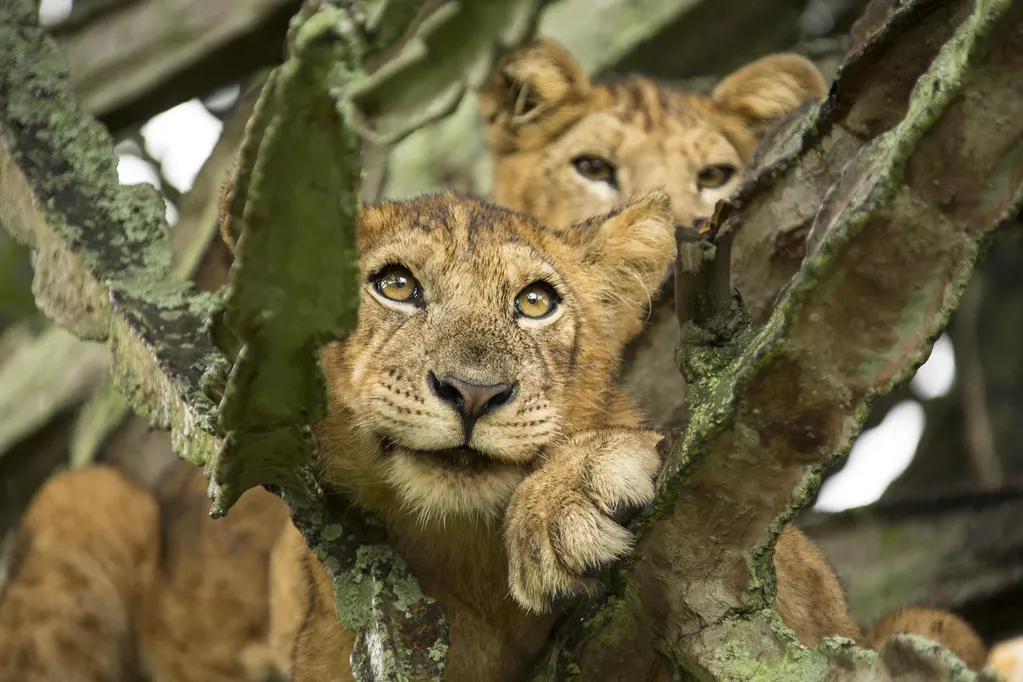
5. Kidepo Valley National Park
Located in the far north-eastern region of Uganda, Kidepo National Park is arguably the most remote destination for wildlife safaris in Uganda and anywhere else in East Africa. It is one of the most beautiful wildlife safari parks as well. Despite its remote location, Kidepo Valley National Park offers excellent wildlife viewing, including 4 of the Big Five, with huge buffalo herds especially prominent.
6. Lake Mburo National Park
Situated halfway between Kampala and the gorilla trekking forests of the southwest, Lake Mburo is a perfect overnight stop-over for travelers making their way between the 2 destinations. While heavyweights such as elephants are missing, the great mix of wetland and woodland habitats makes for a wide range of mammals and birds. And Mburo’s tranquil atmosphere and soothing views provide welcome relief after a long wildlife safari in Uganda.
7. Ziwa Rhino Sanctuary
Ziwa Rhino Sanctuary is the only place where you can wild rhinos in Uganda today. Even better, it is one of the few places where you can track these prehistoric-looking animals on foot, with sightings being nearly guaranteed. The sanctuary is located near Murchison Falls National Park. And it remains one of the best places for wildlife safaris in Uganda for people who want to see all the Big Five animals of Africa.
8. Mgahinga Gorilla national Park
Mgahinga Gorilla National Park is frequently dismissed as the second-best place see the rare mountain gorillas of Uganda. This assessment is totally unfair. There is only one gorilla family to be visited here. But this is one of the most enjoyable gorilla families to visit in Africa since it contains 3 giant silverback males and tends to live in a more open bamboo forest than its counterparts in the Bwindi Impenetrable Forest.
Mgahinga also has many other assets. It is the only place in Uganda where you can do a beautiful hike to see endemic golden monkeys.
9. Semuliki National Park
The Semliki National Park in Valley in the western is one of the country’s more remote wilderness regions, unspoiled by mass tourism and considered by many (particularly bird lovers) to be one of Uganda’s best-kept safari secrets. This beautiful 220 km2 is the only true tract of lowland tropical forest in East Africa.
Its landscape is dominated by Uganda ironwood trees, interspersed with lush palm trees and verdant ferns. Set against this backdrop of green, are over 440 bird species and 350 species of butterflies that flutter between shafts of light.
10. Mabamba Swamp
Mabamba Swamp is only a short boat ride or drive from Entebbe city. The swamp is a bird-lovers paradise run as a community ecotourism project. It heads the list of best places to visit in Uganda (actually, make that anywhere on the African continent) to see the shoebill. This is pre-historic looking bird that feeds on lungfish, frogs, snakes, and baby crocodiles and claps together its massive shoe-shaped bill like castanets when disturbed.

Animals To See On A Wildlife Safari In Uganda

Uganda is home to more than 345 mammal species, 1097 bird species, 140 reptile species, and 1249 species of butterflies. The country is home to all Africa’s Big Five. It is also home to more than 5000 wild chimpanzees and over 50% of the world’s population of mountain gorillas. Some of the major wildlife in Uganda include;
- Carnivores: Lions, Leopards, cheetahs, hyenas, and many more.
- Herbivores: Buffalos, elephants, Giraffes, Hippos, Rhino, Zebra and many more.
- Reptiles: Crocodiles, pythons, snakes, monitor lizards, chameleons.
- Birds: Shoebills, Fish eagles, Vultures, Turacos, and many more.
- Primates: Mountain gorillas, chimpanzees, Golden monkeys, Baboons, and more
Read more: A guide to animals of Uganda
Looking For The Best Wildlife Safaris in Uganda?
Our selection of the best wildlife safaris in Uganda also include Tanzania, Rwanda and Kenya’s most popular safari destinations: why not combine a Uganda wildlife tour with safari in the Masai Mara, Serengeti or even a relaxing holiday at Spice Island of Zanzibar?
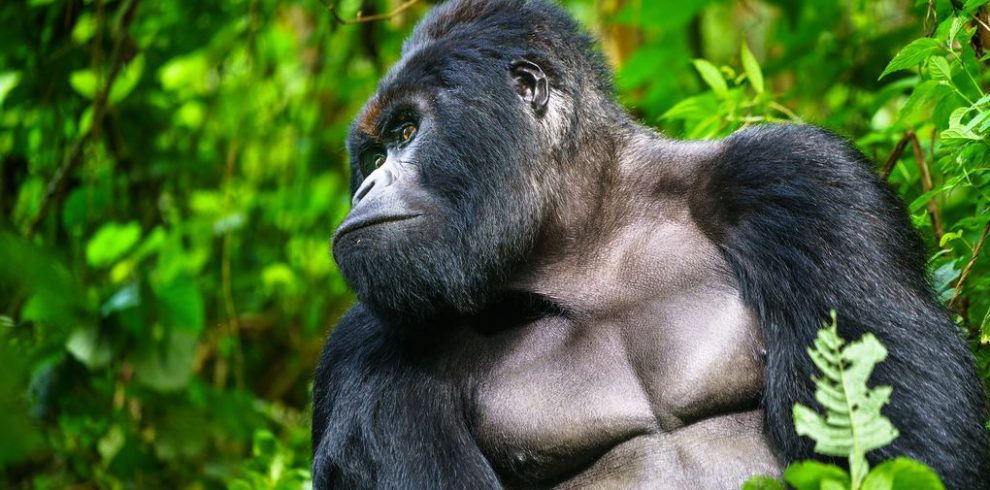
Affordable 3 Day Gorilla Trekking Uganda Safari tour
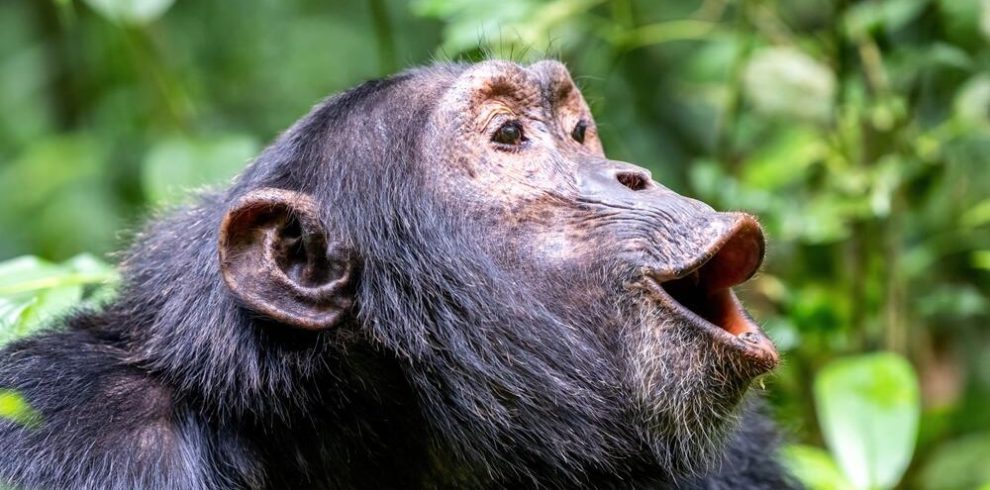
7-Day Uganda Wildlife Safari | Chimps, Gorillas, Big 5 & More!
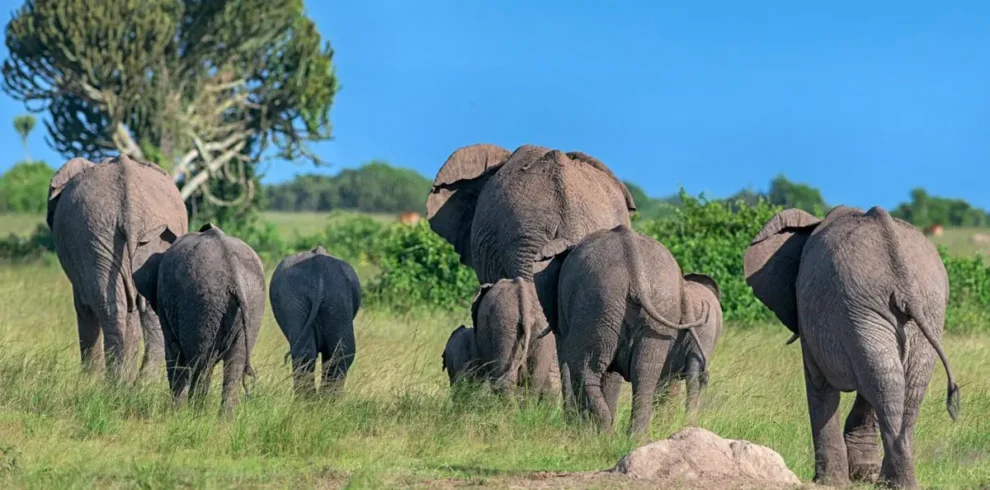
3 Day Queen Elizabeth National Park Safari In Uganda
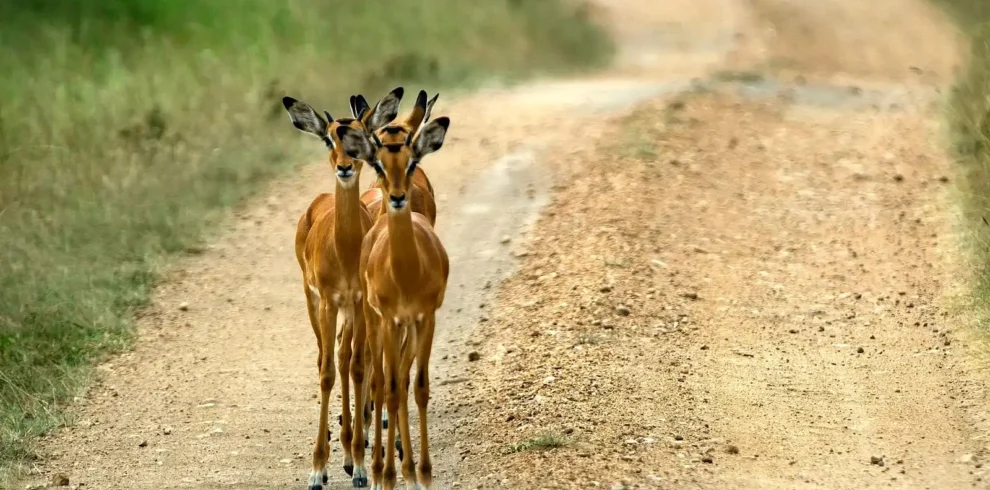
3 Days Lake Mburo Safari, Boat Cruise, Game Drive & Game Walk
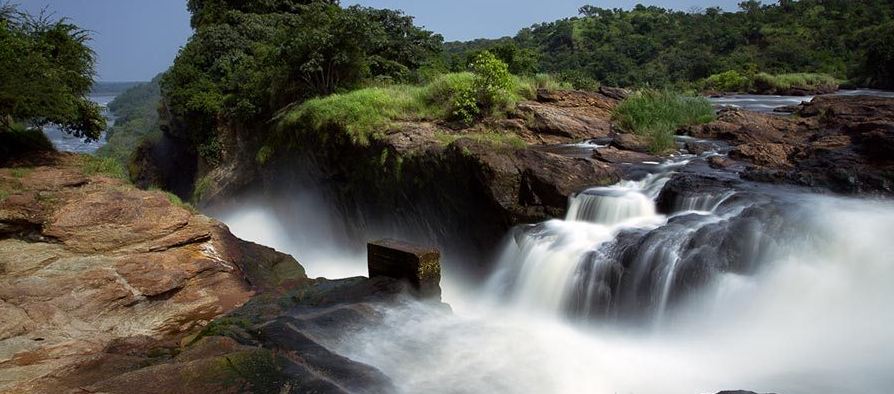
3 Days Murchison Falls Safari, Big Game & Beautiful Scenery
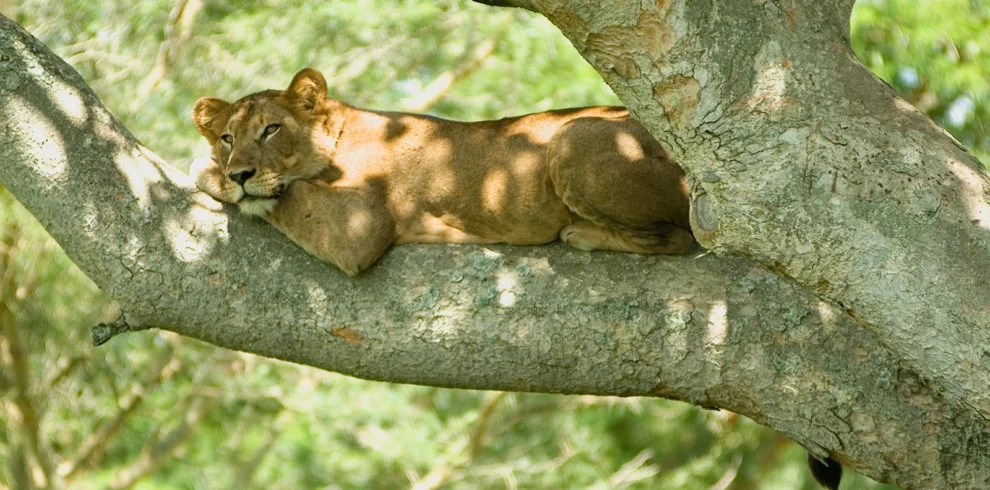
10 Days Uganda Wildlife Safari, gorillas, Chimps & Big Game
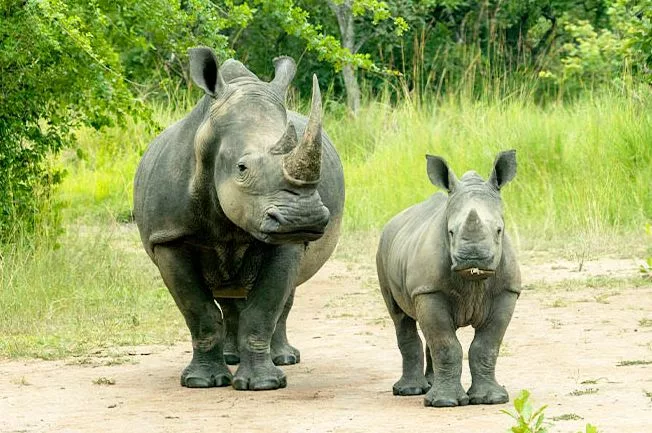
12 Days Uganda Safari, Big Five, Chimps, Gorillas And Culture
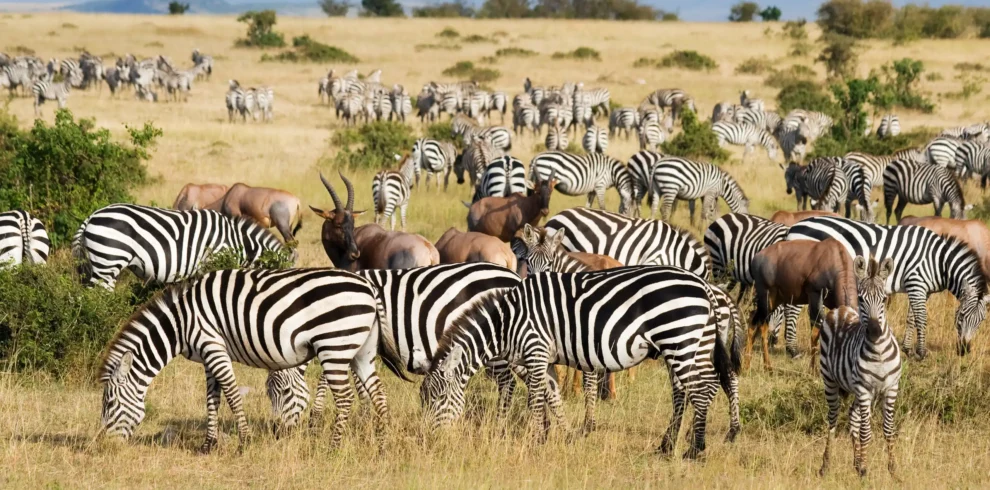
20-Day Uganda, Kenya & Tanzania Safari Vacation
gorilla trekking Uganda – Gorilla Safaris
Gorilla trekking is arguably the top Uganda wildlife safari experience. Imagine spending time with our closest living relatives, in the depths of their jungle home.
There are two gorilla parks in Uganda in Uganda: Bwindi Impenetrable Forest and Mgahinga Gorilla National Parks. And we have a range of different Uganda gorilla trips that visit each of these unique places.
While the gorilla treks, themselves can be humid and muddy (you will be in the rainforest after all!), once you’re face-to-face with a majestic silverback or watching a female gorilla play with her baby, the effort to meet these rare creatures all seems worth it. Your standard gorilla trekking encounter normally lasts just one precious hour, but Uganda is also offering a extended four hour gorilla habituation experience.
You may also like Chimpanzee Trekking in Uganda.
Things To Remember About Wild Animals In Uganda
- Wild animals can be dangerous. They should be treated with respect and caution.
- Most camps/lodges are unfenced. Dangerous animals like elephants, buffaloes and hippos can wander through, especially at night.
- Listen to safety precautions from lodge staff and guides.
- Don’t leave your lodge on your own without a guide, especially at night.
- View animals silently and with minimal disturbance to their natural activities.
- If you stand up on game drive vehicles or talk in a loud voice you can frighten wild animals away. You can even cause an aggressive animal reaction
- Try not to attract the attention of the wild animals.
- Don’t imitate their sounds.
- Don’t clap your hands, pound the vehicle or throw objects.
- Please respect your guide’s judgment about proximity to predators and large animals like elephants.
- If you drive your vehicle too close to the animals, it can hinder a hunt or cause animals to abandon a hard-earned meal. This as well triggers a charge.
- Littering in the wildlife parks, in addition to being unsightly can poison animals and birds.
- Never attempt to approach any wild animal on foot without a guide.
- And never feed the animals in the wild. Lodges and camps suffer the consequences as these animals may become accustomed to humans – leading to danger for all involved.
- Don’t smoke on game drives.
- The dry bushveld of Africa ignites very easily, and a fire can kill animals and destroy their grazing areas.
- Do not leave young children unattended in a park. Noisy children can also irritate other guests. Also, to predators such as leopards, children often sound like prey animals making distress calls.
FAQs About Wildlife Safaris In Uganda
If you would like to know more about wildlife tours in Uganda, here are some answers to the most common questions about Uganda wildlife safaris.

1. How Much Does A Wildlife Tour In Uganda Cost?
Let us try to do some safari costing together. Right? A Uganda gorilla trekking permit per person costs US$ 700 as of 2023. Accommodation ranges from 100 to 900 depending on where you choose to stay.
Roughly a simple 3-day safari to Bwindi should cost around $ 1600 per person, which should be the cheapest. Other Uganda wildlife safari destinations such as Queen Elizabeth and Murchison Falls National Parks could cost about $ 800 for budget safari travelers. If you’re traveling with other people, the price of a Uganda safari is incredibly reduced. If they are 2 of you, it is possible to save over $ 300 on a 3 day wildlife trip to Uganda.
- Budget wildlife safaris in Uganda cost from $150 per person per day
- Mid-range safaris can start from $300 per person per day and
- Top-end luxury Uganda safaris start at around $600 per person.
2. Why Go For Wildlife Safaris In Uganda?
More than half the world’s mountain gorillas live in Uganda and the country’s gorilla trekking permits are among the most affordable in Africa. Plus, wildlife safaris in Uganda offer you a chance to augment your gorilla trekking experience with a one-of-a-kind chimpanzee trekking adventure in Kibale Forest.
You can also enjoy classic game viewing in Savannah game parks. The savannah plains of Uganda’s national parks are inhabited by elephants, lions, buffalo, leopards, hippos, crocodiles, zebras, giraffes, hyenas, and the unique Uganda kobs. Uganda has over 20 species of monkeys inhabiting the various rainforest jungles.
In addition to a wide variety of mammals, the country is also one of the most bird-rich countries on Earth with about 1097 bird species including the prehistoric-looking shoebill.
3. What Are The Best Time For Wildlife Safaris In Uganda?
The best time for wildlife viewing in Uganda is during the dry seasons, from June to early September and December to February. This is when there is less vegetation to hinder your view and when animals are more likely to congregate near water sources. Really, though, Uganda is a year-round destination.
The country sits squarely on the equator and the average altitude of about 1,000 m tempers the heat. March to May and October to November see the highest rainfall. Read more about the best time to visit Uganda.
Questions About Uganda Wildlife Safaris?
If you still have any questions about wildlife safaris in Uganda, feel free to CONTACT US. We will answer your questions as soon as possible and help you design a Uganda wildlife tour with a comfortable itinerary. For quick information, you can WHATSAPP US.
